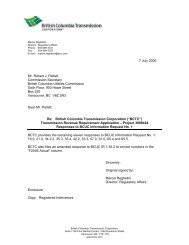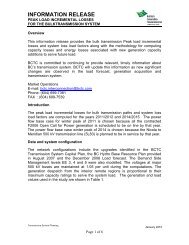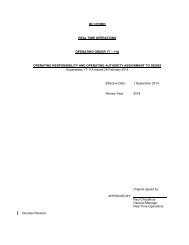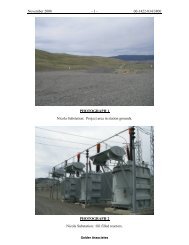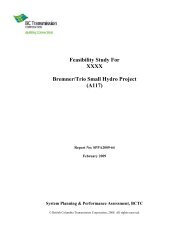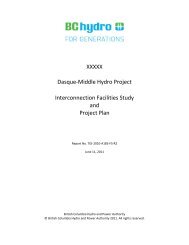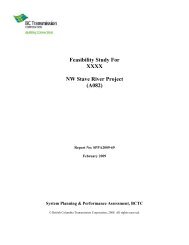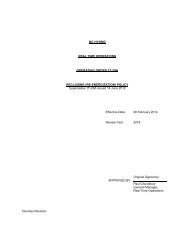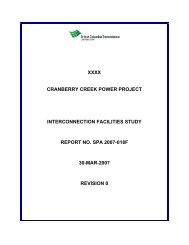Emergency Manual Load Shedding and Peak Load Reduction ...
Emergency Manual Load Shedding and Peak Load Reduction ...
Emergency Manual Load Shedding and Peak Load Reduction ...
You also want an ePaper? Increase the reach of your titles
YUMPU automatically turns print PDFs into web optimized ePapers that Google loves.
3.0 EMERGENCY MANUAL LOAD SHEDDING (EMLS)OO 6T-29Effective Date: 02 July 2014Page 3 of 13EMLS is to be used when the Transmission Coordinator judges that the load must be reduced assoon as possible. EMLS might be necessary for a number of conditions including (but not limited to):Insufficient automatic under-frequency load shedding to arrest frequency decay.Insufficient automatic under-voltage load shedding to prevent voltage collapse.Inability to restore or maintain proper generation-load balance due to severe shortages ofgenerating capacity.Inability to increase frequency by adjusting generation alone to permit synchronizing withother areas.System component overloads which cannot be rectified by other means.For EMLS purpose, the BC Hydro integrated system is segmented into four sub-areas: LowerMainl<strong>and</strong> (LM), Vancouver Isl<strong>and</strong> (VI), Northern Interior (NI), <strong>and</strong> Southern Interior (SI). For eacharea, EMLS will be done in three approximately equal blocks (1, 2, <strong>and</strong> 3) with Block 1 being the firstshed. The total shedding of blocks 1, 2 <strong>and</strong> 3 shall equal one half of the estimated peak load for thatarea. Appendix 1- 4 list all load components to be shed with each block in each area.If practical, shedding should be spread over the system with all areas participating proportionately, butthe TC may order the shedding for specific areas of the system when there is a regional generation<strong>and</strong> load imbalance.The load shedding requirement will generally be recognized <strong>and</strong> load shedding ordered by the TC.But in the event an area is isl<strong>and</strong>ed, the GO / LO responsible for the isl<strong>and</strong>ed area shall shed load asnecessary to maintain frequency. As a minimum, the TC, GO or LO will take action to avoidsustained operation below 57.9 HZ in order to avoid serious problems for customers orBC Hydro equipment.Using supervisory control provided by BC Hydro Energy Management System (EMS), the operatorshall be capable of shedding all three blocks in an area in less than five minutes. Appendix 5describes the EMS displays to be used for EMLS. The permission to operate devices needed to shedload has been assigned to the TC in addition to the applicable GO <strong>and</strong>/or LO. The TC does notmonitor alarms associated with these devices.A poke point to the EMLS screens can be found on each grid sector overview. Additionally, theTransmission Coordinator Overview has a poke point to the EMLS.System voltage shall be closely monitored <strong>and</strong> adjusted during load shedding. <strong>Manual</strong> load sheddingshould continue until frequency is stabilized <strong>and</strong> line <strong>and</strong> equipment loading is within their capability. Ifresidential circuits are shed for more than 30 minutes, the TC or LO should use peak loadreduction procedure, if possible, to enable restoration of these residential circuits.The terminology used by the Transmission Coordinator to order <strong>Emergency</strong> <strong>Manual</strong> <strong>Load</strong><strong>Shedding</strong>, if necessary, will be:"This is an emergency. Shed <strong>Emergency</strong> <strong>Manual</strong> <strong>Shedding</strong> Block(s) _ _ _ _ _ _for the _ _ _ _ _ _ _ _ (LM / VI / NI / SI) area immediately.”All verbal communication involving directives to shed load will utilize formal three-part(repeat-back) communication procedures, using English as the working language.






